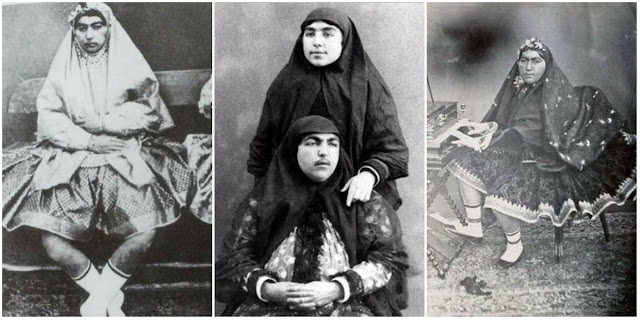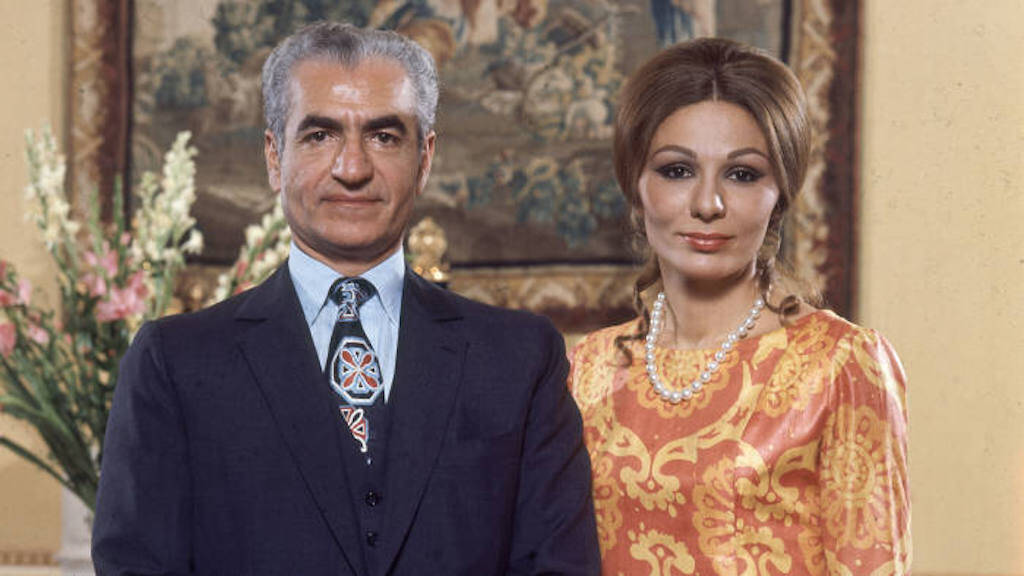When thinking about historical figures, especially those who held immense power, a common question often pops up about their personal lives. For Mohammad Reza Pahlavi, the last Shah of Iran, his marital history certainly captures a lot of interest. People often wonder about the number of wives he had, and the stories behind those relationships. It's a topic that, you know, really gives us a glimpse into the life of a monarch and the societal expectations of his era.
Mohammad Reza Pahlavi, who reigned from 1941 until the Iranian Revolution in 1979, lived a life marked by significant political change and personal experiences. His marriages, in particular, were not just private affairs; they were, in a way, public spectacles, often carrying political and dynastic implications for the Peacock Throne.
So, exactly how many wives did the Shah of Iran have? This question, while seemingly simple, opens up a story of three distinct women, each playing a rather important role during their time with the monarch. We'll look at each of these relationships, giving you a clearer picture of his personal journey and the women who shared parts of it.
Table of Contents
- Shah Mohammad Reza Pahlavi: A Brief Biography
- Personal Details and Bio Data
- The Shah's First Marriage: Princess Fawzia Fuad
- The Shah's Second Marriage: Princess Soraya Esfandiary-Bakhtiary
- The Shah's Third and Final Marriage: Farah Diba
- Understanding the Number Three
- People Also Ask About the Shah's Marriages
- A Summary of the Shah's Marital Life
Shah Mohammad Reza Pahlavi: A Brief Biography
Mohammad Reza Pahlavi was the second and last monarch of the Pahlavi dynasty. Born in Tehran on October 26, 1919, he took over the throne from his father, Reza Shah, in 1941. His reign saw Iran go through a period of modernization and Westernization, but also faced significant internal opposition and external pressures. He was, in some respects, a figure caught between tradition and progress, trying to guide his nation into a new era.
During his time as Shah, he worked to strengthen Iran's economy and military, aiming to make it a powerful regional force. He initiated the White Revolution, a series of reforms that included land redistribution and women's suffrage. However, these changes, while ambitious, also led to social unrest and discontent among various groups, which eventually contributed to the Iranian Revolution. His life, you know, was pretty much intertwined with the fate of his country, right up until his exile in 1979.
Personal Details and Bio Data
| Full Name | Mohammad Reza Pahlavi |
| Title | Shah of Iran (Shahanshah) |
| Reign | September 16, 1941 – February 11, 1979 |
| Born | October 26, 1919, Tehran, Qajar Persia |
| Died | July 27, 1980, Cairo, Egypt |
| Father | Reza Shah Pahlavi |
| Mother | Taj ol-Molouk |
| Wives | Princess Fawzia Fuad (m. 1939; div. 1948) Princess Soraya Esfandiary-Bakhtiary (m. 1951; div. 1958) Farah Diba (m. 1959) |
| Children | Shahnaz Pahlavi (with Fawzia) Reza Pahlavi, Farahnaz Pahlavi, Ali Reza Pahlavi, Leila Pahlavi (with Farah) |
The Shah's First Marriage: Princess Fawzia Fuad
The Shah's first marriage was to Princess Fawzia Fuad of Egypt, the sister of King Farouk I of Egypt. This union was, in a way, a strategic alliance between two prominent Middle Eastern monarchies. They married in March 1939, a few years before Mohammad Reza became Shah. Fawzia was known for her striking beauty, often described as truly captivating. The wedding was a grand affair, reflecting the importance of the two royal families.
Their marriage produced one child, a daughter named Princess Shahnaz Pahlavi, born in 1940. However, the union was not destined to last. Cultural differences, a sense of isolation for Fawzia in the Iranian court, and a growing unhappiness led to their separation. She found it, you know, quite difficult to adjust to life in Tehran, away from her family and the more cosmopolitan environment of Cairo. In 1948, the divorce was finalized. This separation was, in a way, a significant event, as it meant the Shah would need to seek a new wife to ensure the continuation of the Pahlavi dynasty through a male heir.
The Shah's Second Marriage: Princess Soraya Esfandiary-Bakhtiary
Following his divorce from Fawzia, the search for a new queen began, with a strong emphasis on finding someone who could provide a male heir. The Shah met Soraya Esfandiary-Bakhtiary, a young woman with both Iranian and German heritage. She was, in some respects, a modern choice, beautiful and educated. They married in February 1951, and their wedding was a lavish event, capturing global attention. Soraya quickly became a popular figure, known for her elegance and charm. People really admired her style and grace.
Despite their deep affection for each other, this marriage also faced a major challenge: Soraya was unable to have children. This became a critical issue for the monarchy, as the lack of an heir was seen as a threat to the stability of the throne. The Shah, under pressure from his advisors and the need for a successor, eventually had to make a very difficult choice. After much personal anguish, they divorced in 1958. This was, you know, a truly heartbreaking situation for both of them, as they clearly cared for one another. Soraya was given the title of "Princess Soraya" after the divorce, and she lived the rest of her life in Europe, never remarrying.
The Shah's Third and Final Marriage: Farah Diba
The need for an heir remained paramount for the Shah. His third marriage was to Farah Diba, a young Iranian architecture student studying in Paris. She was introduced to him in 1959, and they quickly married in December of that year. This marriage was, in a way, different from the previous two; Farah was Iranian, which resonated well with the populace, and she brought a fresh energy to the royal court. She was also, quite importantly, seen as a symbol of modern Iranian womanhood.
This union proved successful in terms of dynastic succession. Farah gave birth to four children: Crown Prince Reza Pahlavi (born 1960), Princess Farahnaz Pahlavi (born 1963), Prince Ali Reza Pahlavi (born 1966), and Princess Leila Pahlavi (born 1970). Farah Diba, who became Empress Farah, was not just a queen consort; she was an active figure in Iranian society, involved in arts, culture, and social welfare. She was, you know, very much a partner to the Shah in his public life, undertaking many charitable and cultural initiatives. This marriage lasted until the end of the Shah's reign and his subsequent exile. Farah remained by his side through the revolution and his final illness, demonstrating a very strong bond.
Understanding the Number Three
So, to directly answer the question: the Shah of Iran had three wives. While some might think of "many" as meaning numerous, multiple, or even countless, especially when discussing historical figures with great power, the precise count here is a clear three. Each marriage had its own distinct story, reasons for being, and eventual outcome. It's not, you know, a vague "multitudinous" number, but a very specific figure that shaped his personal life and, in some ways, the future of the monarchy.
The concept of "many" can sometimes be misleading. If you have a great number of refrigerator magnets, you have many of them. But here, with the Shah's wives, we're talking about a definite, countable plural noun: three women. It's about understanding the exact quantity rather than just a general sense of "a lot of items." His life, in this regard, involved three significant marital partnerships, each with unique challenges and joys. This distinction is, in a way, important for historical accuracy.
People Also Ask About the Shah's Marriages
Who was the last wife of the Shah of Iran?
The last wife of the Shah of Iran was Farah Diba. She married Mohammad Reza Pahlavi in 1959 and remained his wife until his passing in 1980. She was, in a way, a very visible and active Empress during his reign, known for her involvement in cultural and social programs.
Did the Shah of Iran have children?
Yes, the Shah of Iran had children. He had one daughter, Princess Shahnaz Pahlavi, from his first marriage to Princess Fawzia Fuad. With his third wife, Farah Diba, he had four children: Crown Prince Reza Pahlavi, Princess Farahnaz Pahlavi, Prince Ali Reza Pahlavi, and Princess Leila Pahlavi. So, too, he had a total of five children from his marriages.
Why did the Shah of Iran divorce Soraya?
The Shah of Iran divorced Princess Soraya Esfandiary-Bakhtiary primarily because she was unable to have children. The continuation of the Pahlavi dynasty through a male heir was seen as absolutely vital for the stability of the throne. Despite their affection for each other, this dynastic necessity ultimately led to their separation in 1958. It was, you know, a very difficult decision for both of them.
A Summary of the Shah's Marital Life
Mohammad Reza Pahlavi, the last Shah of Iran, had three wives during his lifetime: Princess Fawzia Fuad, Princess Soraya Esfandiary-Bakhtiary, and Farah Diba. Each marriage brought its own set of circumstances and challenges, from political alliances to the crucial need for a dynastic heir. His marital journey, you know, really shows the blend of personal emotion and royal duty that often shaped the lives of monarchs.
While the first two marriages ended in divorce, primarily due to the lack of a male successor, his third marriage to Farah Diba provided the stability and heirs needed for the monarchy. She stood by him through the most tumultuous period of his rule and exile. To learn more about Iranian history on our site, and to explore this page for related topics, you can get a deeper sense of the context surrounding his life. His story, in a way, remains a fascinating part of 20th-century history.
For more detailed historical accounts, you might find resources like the Encyclopaedia Iranica quite helpful.



